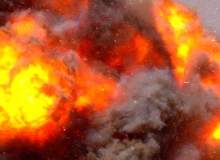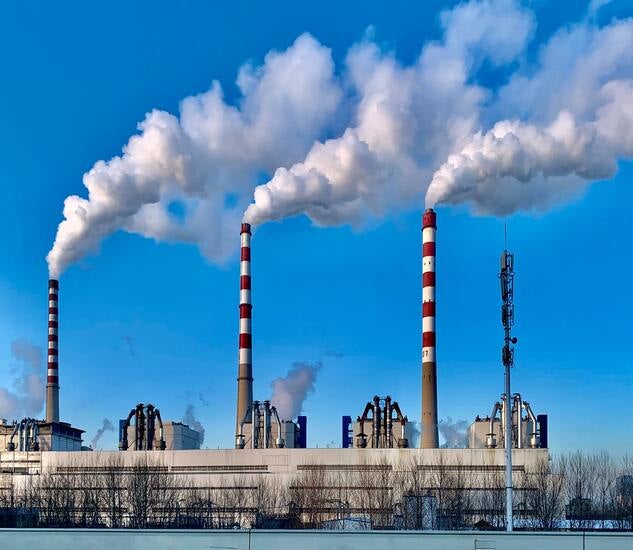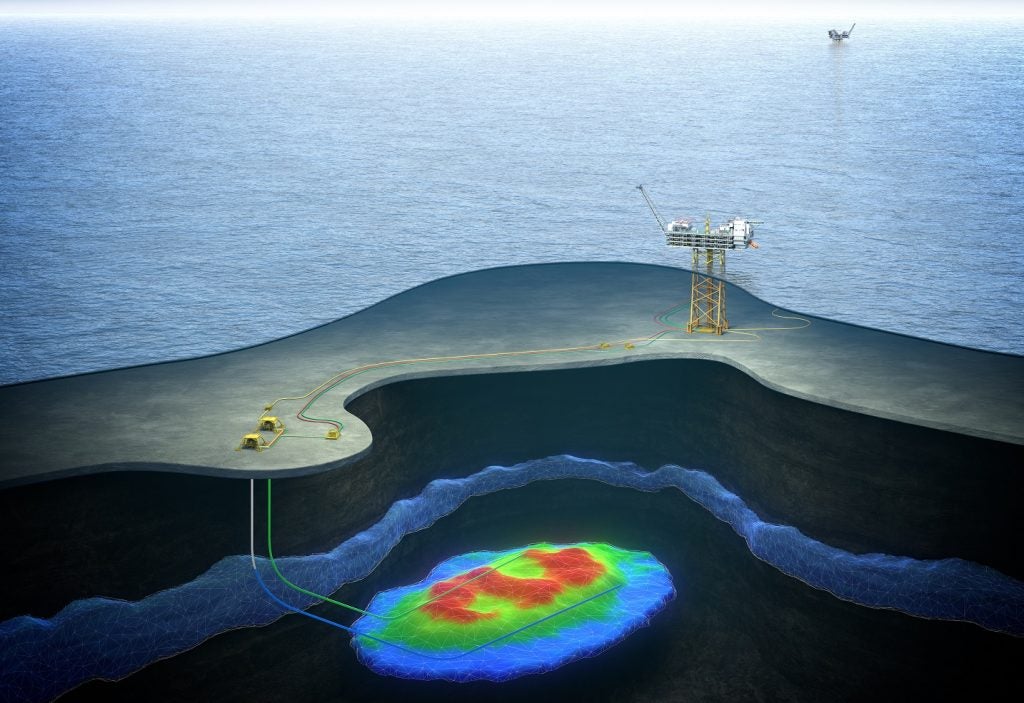

From the Hafgufa ‘sea-steam’ of the old Icelandic sagas – supposedly the largest monster in the ocean, able to swallow entire ships whole – to the legends of ghostly galleons and disappearing crews of more recent times, the world’s seafaring nations have always told of bad things that lurk in the mists.
Although spontaneously igniting sea fog does sound like the sort of tale locals tell in coastal village pubs to gullible tourists for the price of a pint or two, as a recently published report from the UK’s Health and Safety Executive (HSE) points out, for O&G platforms, it can sometimes be all too real.
According to the study, in no fewer than 96% of the reported cases where accidental liquid releases occurred at offshore installations, flammable mists could have been formed.
Published in February, ‘Flammable mists from accidental hydrocarbon releases offshore’ examines the issue of hydrocarbon droplet mist formation, and looks at the likelihood and frequency of their production, based on incident data over a five year period. The report raises a number of important issues – perhaps most notably in respect of the current state of computer modelling, and its implications for the industry’s attempts to characterise the risk these mists pose and so ultimately implement the necessary measures needed to control them.
How well do you really know your competitors?
Access the most comprehensive Company Profiles on the market, powered by GlobalData. Save hours of research. Gain competitive edge.

Thank you!
Your download email will arrive shortly
Not ready to buy yet? Download a free sample
We are confident about the unique quality of our Company Profiles. However, we want you to make the most beneficial decision for your business, so we offer a free sample that you can download by submitting the below form
By GlobalDataSee Also:
Droplet danger
The real danger of flammable mists, of course, comes when they catch fire, and the way a mist burns if that does happen is very largely dependent on droplet size. Where they are composed of individual drops below 7 microns (10-6 m) in size, the heat and pressure wave ahead of the advancing flame front means that those suspended droplets evaporate, thus burning as a hydrocarbon vapour cloud – and the flame travels through swiftly.
At a droplet size of 30 microns or above, it spreads more slowly, since burning takes place not as a single cloud, but instead in individual envelopes of vapour around each droplet, and the larger the diameter, the slower the flame progression, as increasing amounts of heat energy is drawn from the reaction to sustain the vaporisation. There is, however, some experimental evidence to suggest that when their droplet size lies between those two extremes – in the 7 to 30 microns range – mists could exhibit significantly greater burning velocity and generate higher pressures, although considerably more work is still needed to be certain.
In 2013, specialist T.D. Williamson had to mobilise quicker than ever before. The job: isolate gas pipelines offshore Indonesia to keep gas flowing to Jakarta.
Translating all that in terms of offshore risk assessment, the size of the droplets matters because smaller droplets are more readily carried in the air, and remain airborne for longer – thus potentially producing larger clouds of flammable mist.
The making of a mist
According to the HSE report, there are three mechanisms which could result in an accidental release giving rise to a flammable mist, involving pressure liquefied gases, flammable liquids under pressure and multi-component and two-phase fluids.
Pressure liquefied gases are stored at temperatures above their boiling point, the pressure acting to keep them in a liquid form within their containers. Once released, they flash boil, and vapour bubbles are produced within the resulting jet stream, which merge and eventually force the original jet into a stream of droplets. Depending on the nature of the particular hydrocarbon, these may evaporate, pool on the ground – or be carried in the air to form a mist.
Under certain conditions, hydrocarbons stored below their boiling point can also be mist-forming – principally if they escape at a high enough velocity for the escaping stream to break up into droplets small enough to become suspended in the air. According to the report’s authors, however, the generally accepted view is that the droplet size produced under these circumstances is typically quite large, and they ‘rainout’ to form a pool of liquid – and there has not been much work done on this kind of event as a result. Never-the-less, it remains a relevant consideration for multi-component fluids, such as crude oil, which are composed of a number of different hydrocarbon fractions, some of which are light, low-boiling point components – and so flash on release – and others which are heavier and less likely to be carried by the air.
In two-phase fluids, where vapour and liquid are both simultaneously present, what happens in the event of accidental release depends on whether the chemical itself is miscible or immiscible. If it is miscible, the vapour phase will have dissolved in the liquid phase, leading to a supersaturated solution, and the pressure drop on its release will abruptly force the vapour out of solution in a way that closely resembles the flashing of pressure liquefied gas. For immiscible fluids, on the other hand, the presence of un-dissolved vapour adds to the mechanical pressure driving the jet, and then breaking it up into droplets. In practical terms, it means that in both cases, flammable mists can again potentially be produced.
For the industry, the ability to characterise the likely droplet size and distribution of any generated airborne mist are important factors in evaluating the hazard posed by accidental releases – and that generally involves predictive computer modelling.
Fours years after the BP Deepwater Horizon oil spill and a bill to protect offshore oil and gas whistleblowers is still waiting to be enacted .
Modelling the mist
A number of such programs exist, such as Phast from DNV Technica, Shell Sheppard – part of Shell
Global Solutions’ HGSYSTEMS risk assessment tool – HSE’s own Eject, the American Institution of Chemical Engineering’s Release, TNO and SuperChems, all of which model both mechanical and flashing routes to mist generation.
The HSE report, however, notes that their ability to model the subsequent dispersion and rainout of accidentally released hydrocarbons is "limited." It also points out that although jet breakup validation studies are continuing, they are focused on characterising single flashing releases – not multiple component process fluid mixtures or high-flashpoint hydrocarbons undergoing mechanical breakup. With these representing what the authors describe as the "realistic release scenarios", further experimental work is clearly needed to validate the droplet size models for them, as well as to gain a better understanding of the accelerated flame propagation and pressure issues that occur within mists of pre-heated mixed fuels.
Evaluating the danger
The real question for the industry is, of course, how likely are mists to occur?
HSE statistics show that over the last five-and-a-half years, 38 flash fires – 35 being machine oil and diesel, and three of process hydrocarbons, not including the ‘gas’ category – actually did occur. However, using a correlation proposed by Shell Research, the report’s authors calculated the number of reported releases where a flammable mist could have been formed, and discovered that conditions might have led to droplets within the flammable range being formed in 45% of them.
Looking just at liquid releases, it translates to a potential mist hazard in all but 4% of cases – and results from a correlation which is described as "deliberately cautious." The empirical evidence from those which did actually ignite strongly backs up the notion that in a real-world event, airborne dispersion is more likely than rainout and pooling.
Never-the-less, just because something can happen, it does not mean that it will – but with installations sited miles offshore and escape never an easy option, that is likely to be little comfort to either operators or their workforce. "Awareness of the potential hazards associated with high flashpoint liquids needs to be raised within the process safety industry. Pressurised hydrocarbon fluids need to be considered during risk assessments," the HSE report recommends.
That looks like putting it mildly.



.gif)


